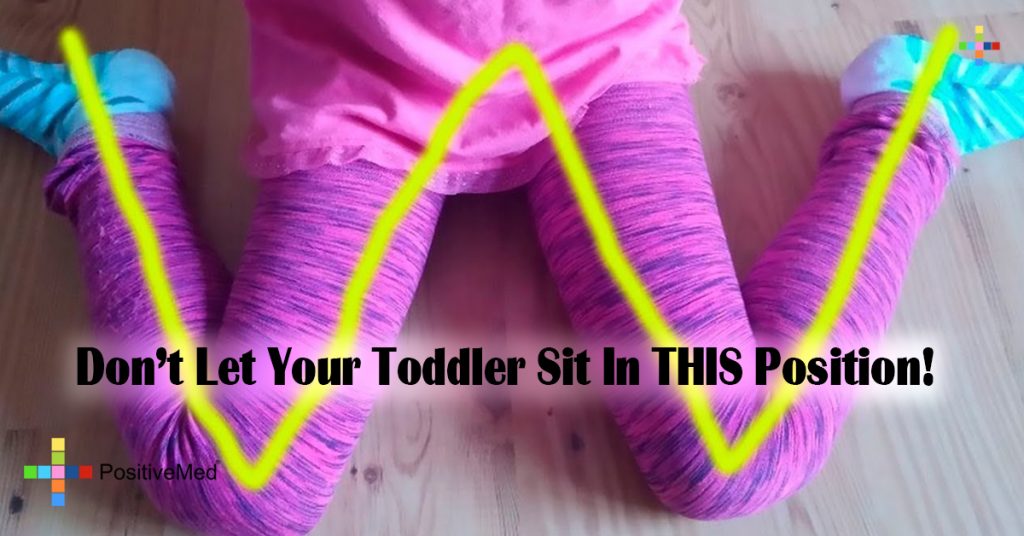
Don’t Let Your Toddler Sit In THIS Position!
[nextpage title=”…”]
Children love to play and to feel the world around them. They will stick things in their mouth, crawl around, and get into trouble. They’re children. It all happens. However, there is one thing to be very aware of when your child starts to sit up and play in a seated position, instead of lying down.

There are many sitting positions that a child learns and takes a liking to. However, when they sit in the “W” position (where their legs are bent behind them to form a “W”), they could possibly be doing harm to their bodies. This position doesn’t force the body to learn how to use the muscles in the back and the core properly, and it forces the hip and leg muscles to act in ways that are unnatural to them.
The “W” position puts extreme pressure on the hip joint. Specifically, it puts pressure on the internal aspects of the hip joints. This pressure causes the muscles to contract, or become shorter. Future movements of these muscles could be restricted by sitting in the “W” position. Even worse, your children could be exposing themselves to a greater risk of hip dislocation by sitting in this position.
The knees and ankles also suffer from sitting in this position. Unlike sitting Indian style, a style also known as Criss-Cross Applesauce in some places, the knees and ankles are supporting the body and are therefore placed under extreme pressure – like the hip bones. The inner thigh muscles, the hamstrings, and the Achilles’ tendon could be exposed to a greater risk of spasms and contracture.
Furthermore, sitting in the “W” position says something about a child’s postural control. If you’ve ever leaned forward and not fallen over, you have great postural control. Postural control is something that could be compromised when a child decides to favor the “W” position over others. However, if they do not sit in the “W” for a period of time that exceeds time spent in other positions, there is no major reason to worry.
RELATED ARTICLE: Know The 9 Main Symptoms Diabetes In Children
[/nextpage] [nextpage title=”…”]
In addition to what is lost in the hips, legs, and ankles, there is less of a need for the shoulders and torso to develop to stabilize the body’s posture. Muscles that are used to make the “W” position will become stiffer, and there could be a loss of the ability for the muscles to contract.
If the child prefers the “W” position, it could also have impacts on fine motor skills such as walking, writing, etc. Rotation of the trunk (the bottom half of the torso and upper legs) is limited in this position, and it is this rotation that is needed to keep the body balanced. If you try to walk without swinging your arms, it’ll be incredibly awkward.
When an activity requires hands crisscrossing over the body, such as possibly pulling off a shirt or some stretching, or reaching over to get a toy, less rotation in the trunk is a bad, bad thing.
However, there is something parents can do to help keep their child from developing a favor of the “W” position. They can be aware and vigilant in keeping their child from sitting in this position for long periods of time. Playing games and teaching the child to recognize when to move out of the “W” position or to simply prefer a better position can help. Alternating standing and sitting during activities can also help promote less favor of the “W”.
ALSO INTERESTING: Good Posture Explained Perfectly By A Cartoon
There are plenty of other ways to sit that do not harm the child’s body. One favorite of everyone who knows about child development is sitting tailor, Indian, pretzel, or criss-cross applesauce. This is the one where children sit as if they’re a pretzel. Another is the long sit, with legs out in front.
[/nextpage]





